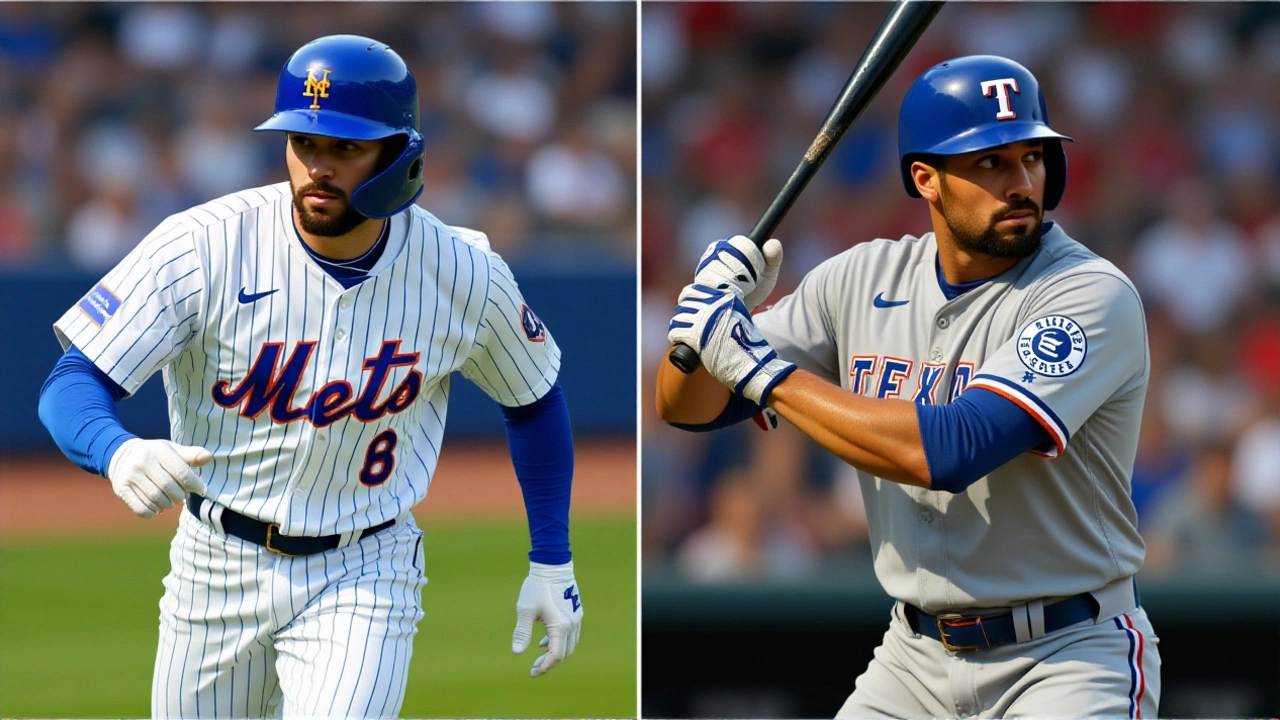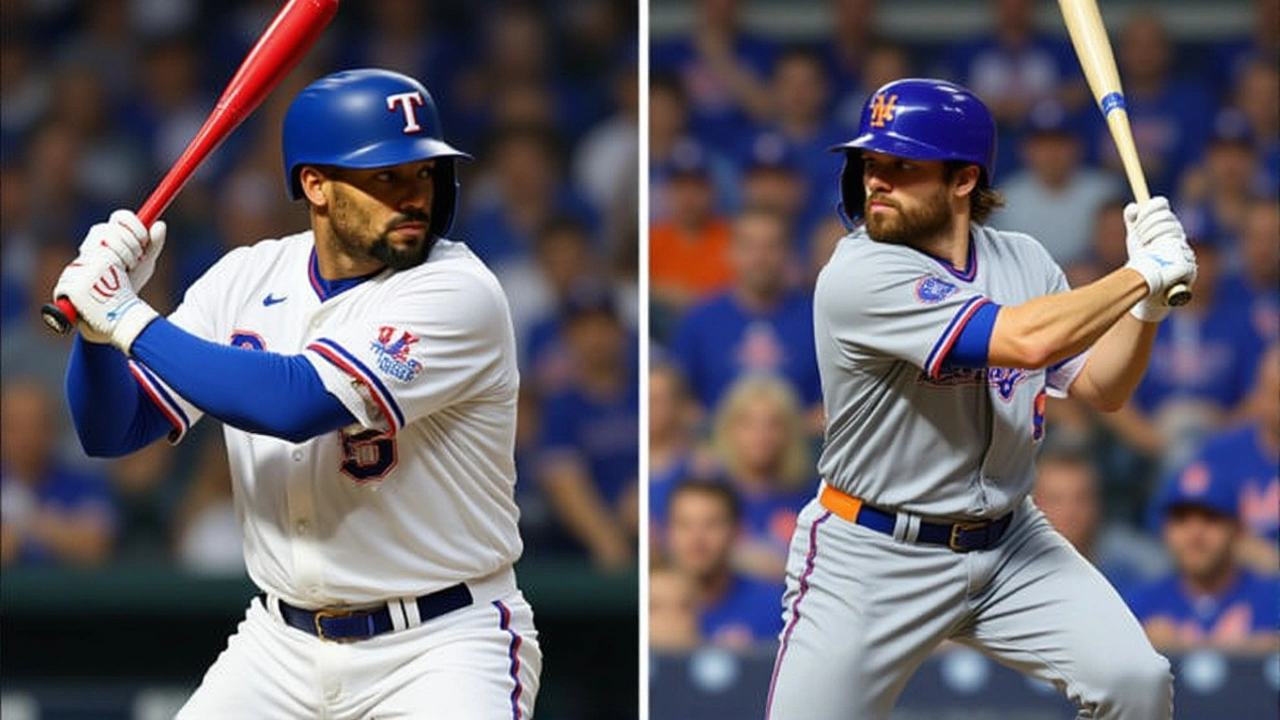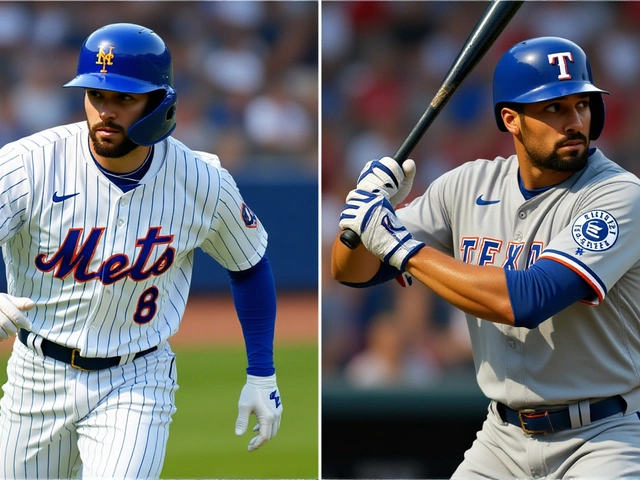
The New York Mets and Texas Rangers pulled off one of the most surprising trades of the offseason on Sunday, November 24, 2025 — swapping two veteran stars with massive contracts and very different profiles. Brandon Nimmo, the Mets’ steady left fielder since 2016, is headed to Arlington in exchange for Marcus Semien, the Rangers’ aging but still reliable second baseman. The deal, confirmed by ESPN’s Jeffrey Adam Passan, wasn’t just about talent — it was a financial reset with ripple effects across the league.
Why This Trade Makes Sense for Both Sides
For the Texas Rangers, this was a payroll surgery disguised as a roster upgrade. Semien, 35, was due to earn $26 million in both 2026 and 2027, a hefty sum for a player whose 2025 performance dipped to a career-low .230/.305/.364 slash line and an 89 wRC+. His defense kept him valuable — seven outs above average at second base — but the Rangers, fresh off non-tendering Adolis García and Jonah Heim, needed to shed salary. By taking on Nimmo’s $20.5 million annual salary through 2030 and receiving $5 million in cash, they cut their 2026-2027 payroll by roughly $5.5 million per year. That’s not just savings — it’s breathing room. And in return, they got a power bat. Nimmo’s 2025 season was his best: 25 homers, 92 RBIs, 114 wRC+. He’s not a Gold Glove defender, but his bat can carry him in a lineup that lost García and needs more left-handed power.Meanwhile, the New York Mets traded away their most consistent offensive player since 2022 — the guy who hit .262 with a .324 on-base percentage and 25 home runs — for a player who, statistically, had a worse year. But here’s the twist: Semien’s value isn’t in his bat anymore. It’s in his glove and his leadership. After Jeff McNeil’s departure to free agency, the Mets had a gaping hole at second base. Brett Baty can’t play there full-time. Mark Vientos is a third baseman. Francisco Lindor needs a partner. Semien, despite his age, is still a plus defender and a veteran presence. He’s played 127 games in each of the last three seasons. He knows how to win. And his contract? It’s shorter. He’s only under contract through 2028. Nimmo’s deal runs through 2030. The Mets are betting that Semien’s decline will be gradual — and that his presence will help stabilize a young core.
The Financial Math Behind the Swap
Let’s break it down: Nimmo’s contract: 8 years, $162 million — $20.5 million per year through 2030. Semien’s: 7 years, $175 million — $26 million in 2026 and 2027, $20 million in 2028. The Rangers took on more years but less money annually. And they got $5 million in cash. That’s a net savings of $5.5 million per year for two years. For a team that just cut four players to get under the luxury tax threshold, that’s critical. The Mets, meanwhile, gave up a player with higher offensive upside but locked in a longer-term commitment. They got a player who’s two years younger and whose deal ends three years sooner. It’s a classic “pay now, save later” move.Sports Illustrated gave the Mets a “B-” grade, noting: “Texas had an aging roster with a lot of money committed to a few players. Semien, Corey Seager, Jacob deGrom, and Nathan Eovaldi were all set to make more than $25 million in 2026. The team is looking to cut payroll.” The analysis nailed it. The Rangers aren’t rebuilding — they’re recalibrating. They still believe they can contend with Seager and Semien (or his replacement) anchoring the infield. But they’re no longer spending like champions. They’re spending like smart operators.
Roster Implications and Future Moves
For the Rangers, Nimmo’s arrival opens up outfield options. Tyler McNeil and Benge can shift to left field. The door is now wide open for free agents like Kyle Tucker or Cody Bellinger — both of whom could fill the right field spot vacated by García. With Semien gone, the Rangers now have more flexibility to rotate younger players like Josh Jung or Ezequiel Duran at second base in 2027 and beyond.For the Mets, Semien immediately slots in at second base, forming a formidable middle infield with Lindor. Vientos may slide to first base if Pete Alonso departs — a real possibility given Alonso’s free agency and the Mets’ need to clear payroll. That opens third base for Baty, or perhaps a trade for Alex Bregman if the Astros look to move him. Either way, the Mets have solved their most glaring positional gap. And they’ve done it without taking on a long-term contract for a declining player. Semien’s deal ends before the Mets’ core — Lindor, Alonso, and Baty — peaks.

What This Means for the Rest of MLB
This trade didn’t happen in a vacuum. It came two days after the Rangers’ fire sale and just weeks before the MLB Winter MeetingsLas Vegas. Teams are watching closely. If Nimmo hits .270 with 20 homers in 2026, the Rangers look brilliant. If Semien bounces back with a .260 average and 15 homers, the Mets look like geniuses. Either way, this trade signals that veteran contracts are being re-evaluated. Teams aren’t just chasing stars — they’re chasing financial flexibility. And they’re willing to trade a slightly better hitter for a slightly better defender if the numbers add up.Expect more deals like this. The market is shifting. Teams with money to spend — the Yankees, Dodgers, Phillies — are circling free agents like Tucker and Bellinger. But teams like the Rangers, with limited budgets and playoff aspirations, are now trading veterans for younger, cheaper alternatives. The Nimmo-Semien swap isn’t just a transaction. It’s a new blueprint.
Background: The Players’ Paths to This Moment
Nimmo was the Mets’ first-round pick in 2011 — a toolsy outfielder who took six years to reach the majors. He became their most consistent hitter after 2020, especially in 2022 when he signed his $162 million extension. He’s never played for anyone else. His loyalty made him a fan favorite. But his defense? That’s where he struggled. He ranked below league average in left field in three of the last five seasons. The Mets had too many outfielders — Nimmo, Pete Alonso, Mark Vientos, and others. He was expendable. Semien? He was a second-round pick by the White Sox in 2013. He broke out in Oakland, won a Silver Slugger in 2019, then signed a $175 million deal with Texas in 2021. He helped them win the 2023 World Series. But since then, his bat has faded. His WAR dropped to 2.1 in 2025 — his lowest since 2018. The Rangers still believed in his leadership. But not enough to keep paying $26 million a year.Now, they’ve swapped roles. Nimmo gets a chance to play for a contender again. Semien gets a chance to play with a team that’s rebuilding its identity — not around money, but around youth and flexibility.
Frequently Asked Questions
Why did the Rangers trade Marcus Semien after just two seasons?
Despite helping the Rangers win the 2023 World Series, Semien’s offensive production declined sharply in 2025, posting a career-low 89 wRC+. With his $26 million salary for 2026-2027 and the team’s need to reduce payroll after non-tendering four players, trading him for Nimmo’s slightly cheaper contract — plus $5 million cash — made financial sense. The Rangers are prioritizing long-term flexibility over short-term star power.
How does this trade affect the Mets’ infield and outfield?
Semien immediately fills the void left by Jeff McNeil’s departure at second base, allowing the Mets to keep Francisco Lindor at shortstop and potentially shift Mark Vientos to first if Pete Alonso departs. This clears the path for Brett Baty at third. In the outfield, Nimmo’s departure reduces logjam, but the Mets still have Mark Vientos, Pete Alonso, and others. They may still pursue a free-agent outfielder like Cody Bellinger to add more power.
Who benefits more financially from this trade?
The Rangers benefit more financially. By taking on Nimmo’s $20.5 million annual salary and receiving $5 million in cash, they save $5.5 million per year in 2026 and 2027 compared to Semien’s $26 million salary. The Mets assume a slightly cheaper long-term contract but gain a player whose deal ends in 2028 — three years before Nimmo’s. Both teams reduced payroll, but the Rangers’ savings are immediate and substantial.
Could this trade trigger more moves in the free agent market?
Absolutely. With the Rangers now needing outfield help and the Mets needing depth, free agents like Kyle Tucker and Cody Bellinger become even more attractive. Teams like the Yankees and Phillies, who have payroll flexibility, may accelerate their pursuit of top outfielders. This trade has reset the market — proving that veteran contracts can be swapped for financial relief, not just prospects.
What does this say about the future of MLB roster construction?
This trade signals a shift toward prioritizing financial flexibility over star power. Teams are increasingly willing to trade proven veterans for younger players or cash, even if the on-field talent appears slightly inferior. The focus is shifting from winning now at all costs to building sustainable, multi-year competitiveness — especially in an era of rising luxury tax thresholds and revenue sharing pressures.
Is Marcus Semien still productive enough to help the Mets win?
Yes — but not as a power hitter. Semien’s value now lies in his defense, consistency, and leadership. He played 127 games in 2025 and remains a reliable contact hitter (.230 AVG, .305 OBP). While his offensive numbers dipped, his ability to get on base and play solid second base makes him a perfect complement to Francisco Lindor. In a lineup with Alonso and Nimmo’s replacement, Semien doesn’t need to carry the team — just stabilize it.



